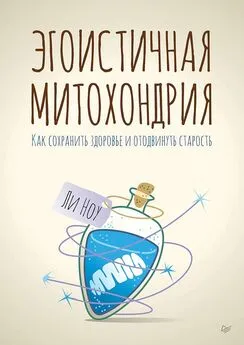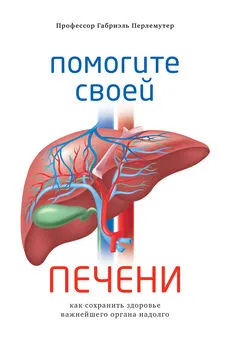Дункан Кармайкл - Молодость навсегда. Как замедлить процессы старения и сохранить здоровье
- Название:Молодость навсегда. Как замедлить процессы старения и сохранить здоровье
- Автор:
- Жанр:
- Издательство:неизвестно
- Год:2018
- ISBN:978-5-389-18963-8
- Рейтинг:
- Избранное:Добавить в избранное
-
Отзывы:
-
Ваша оценка:
Дункан Кармайкл - Молодость навсегда. Как замедлить процессы старения и сохранить здоровье краткое содержание
«Современный мир дает возможность как поддерживать здоровье в пре-красном состоянии, так и еще в молодом возрасте „заработать“ тяжелые хронические заболевания. Очевидно, что в большинстве случаев наше здоровье в наших руках. Вопрос в том, как определить, что помогает, а что вредит? Все так быстро меняется во всех областях медицины, что вчерашнее лекарство завтра может быть признано вредным (и это не учитывая аферистов в белых халатах, пытающихся впарить шарлатанские средства от всех болезней). Поиск надежной информации в эпоху интернета становится нелегкой задачей. Моя цель – составить для вас полезную дорожную карту». (Дункан Кармайкл)
В формате PDF A4 сохранён издательский дизайн.
Молодость навсегда. Как замедлить процессы старения и сохранить здоровье - читать онлайн бесплатно ознакомительный отрывок
Интервал:
Закладка:
629
Chollet, F. et al. ‘Fluoxetine for Motor Recovery After Acute Ischaemic Stroke (FLAME): A Randomised Placebo-controlled Trial.’ Lancet Neurol (2011): 10: 123–130.
630
Hen, R. et al. ‘Chronic Fluoxetine Stimulates Maturation and Synaptic Plasticity of Adult-born Hippocampal Granule Cells.’ J Neurosci (2008): 1374–1384.
631
Mao, Q. Q. et al. ‘Long-term Treatment with Peony-glycosides Reverses Chronic Unpredictable Mild Stress-induced Depressive-like Behaviour via Increasing Expression of Neurotrophins in Rat Brain.’ Behav Brain Res (2010): 210: 171–177.
632
‘Virtual Reality for Stroke Rehabilitation.’ Cochrane (February 2015):.
633
Swaab, D. et al. ‘Elevated Cortisol in Rats Induces Neuronal Damage.’ Ageing Res Rev (2005): 4 (2): 141–194.
634
Chetty, S. et al. ‘Stress and Glucocorticoids Promote Oligodendrogenesis in the Adult Hippocampus.’ Mol Psychiatry (2014): 19: 1275–1283.
635
Lupien, S. et al. ‘The Douglas Hospital Longitudinal Study of Normal and Pathological Aging.’ J Psychiatry Neurosci (2005): 30: 328–334.
636
Steptoe, A. et al. ‘Depression and Elevated Cortisol.’ Am J Epidemiol (2008): 167 (1): 96–102.
637
Flint, M. S. et al. ‘Induction of DNA Damage, Alteration of DNA Repair and Transcriptional Activation by Stress Hormones.’ Psychoneuroendocrinology (2007): 32 (5): 470–479.
638
Thaker, P. H. et al. ‘Chronic Stress Promotes Tumor Growth and Angiogenesis in a Mouse Model of Ovarian Carcinoma.’ Nat Med (2006): 12: 939–944.
639
Goldstein DS. ‘Review: Catecholamines and Stress.’ Endocr Regul (June 2003): 37 (2): 69–80.
640
Lu, T. et al. ‘Gene Regulation and DNA Damage in the Ageing Human Brain.’ Nature (24 June 2004): 429 (6994): 883–891.
641
Russ, T. C. ‘Association Between Psychological Distress and Mortality: Individual Participant Pooled Analysis of 10 Prospective Cohort Studies.’ BMJ (2012): 345.
642
Gu, X. et al. ‘Anterior Insula Cortex and Emotional Awareness.’ J Comp Neurol (2013): 521: 3371–388.
643
Haase, L. et al. ‘Mindfulness-based Training Attenuates Insula Response to an Aversive Interoceptive Challenge.’ Soc Cogn Affect Neurosci (2016): 11: 182–190.
644
Lazer, S. W. et al. ‘Meditation Experience is Associated with Increased Cortical Thickness.’ Neuroreport (2005): 16: 1893–1897.
645
См., например: http://news.harvard.edu/gazette/story/2011/01/eight-weeks-to-a-better-brain/.
646
Epel, E. et al. ‘Can Meditation Slow Rate of Cell Ageing? Cognitive Stress, Mindfulness and Telomeres.’ Ann N Y Acad Sci (2009): 1172.
647
Babiloni, C. et al. ‘Resting State Cortical Rhythms in Athletes. A High-resolution EEG Study.’ Brain Res Bull (2010): 81: 149–156.
648
Babiloni, C. et al. ‘Intra-hemispheric Functional Coupling of Alpha Rhythms is Related to a Golfer’s Performance: A Coherence EEG Study.’ Int J Psychophysiol (2011): 82: 260–268.
649
Moore, N. ‘A Review of EEG Biofeedback Treatment of Anxiety Disorders.’ Clin EEG Neurosci (2000): 31: 1–6.
650
Lustenberger, C. et al. ‘Functional Role of Frontal Alpha Oscillations in Creativity.’ Cortex (2015): 67: 74–82.
651
Warmsley, E. et al. ‘Memory, Sleep and Dreaming: Experiencing Consolidation.’ Sleep Med Clin (2011): 6: 97–108.
652
См., например: ‘David Blaine Braves Brain Damage to Challenge World Record for Staying Awake’ by Richard Simpson. Mail Online (5 December 2007).
653
Schenkein, J. et al. ‘Self-management of Fatal Familial Insomnia. Part 1: What is FFI?’ MedGenMed (2006): 8: 65.
654
Ohayon, M. et al. ‘National Sleep Foundation’s Sleep Quality Recommendations: First Report.’ Sleep Health (2017): Vol 3, Issue 1: 6–19.
655
Moore, D. ‘Eyes Wide Open: Americans, Sleep and Stress’ (12 February 2002). http://www.gallup.com/poll/5314/eyes-wide-open-americans-sleep-stress.aspx.
656
Williamson, A. M. et al. ‘Moderate Sleep Deprivation Produces Impairments in Cognitive and Motor-performance Equivalent to Legally Prescribed Levels of Alcohol Intoxication.’ Occup Environ Med (2000): 57: 649–655.
657
Nagai, M. et al. ‘Sleep Duration as a Risk Factor for Cardiovascular Disease – A Review of the Recent Literature.’ Curr Cardiol Review (2010): 6: 54–61.
658
См., например: https://www.worldhealth.net/news/sleep-apnea-wreaks-havoc-your-metabolism/.
659
Verkasalo, P. K. et al ‘Sleep Duration and Breast Cancer: A Prospective Cohort Study’. Cancer Res (2005): 65: 9595–9600. Mullington, J. et al. ‘Sleep Loss and Infl ammation.’ Best Pract Res Clin Endocrinol Metab (2010): 24 (5): 775–784.
660
Scullin, M. et al. ‘Sleep Cognition and Normal Aging: Integrating a Half-century of Multidisciplinary Research.’ Sage Journals (2015). http://journals.sagepub.com/doi/abs/10.1177/1745691614556680.
661
Xie, L. et al. ‘Sleep Drives Metabolite Clearance from the Adult Brain.’ Science (2013): 342: 373–377.
662
Boyce, R. et al. ‘Causal Evidence for the Role of REM Sleep Theta Rhythm in Contextual Memory Consolidation.’ Science (2016): 352: 812–816.
663
Eugene, A. R. ‘The Neuroprotective Aspects of Sleep.’ MEDtube Sci (2015): 3: 35–40.
664
Chrousos, G. P. et al. ‘Sleep Deprivation Effects on the Activity of the Hypothalamic-pituitary-adrenal and Growth Axes: Potential Clinical Implications.’ Clin Endocrinol (1999): 51: 205–215.
665
Wittert, G. ‘The Relations Between Sleep Disorders and Testosterone in Men.’ Asian J Androl (2014): 16: 262–265.
666
Davidson, J. R. et al. ‘Growth Hormone and Cortisol Secretion in Relation to Sleep and Wakefulness.’ J Psychiatry Neurosci (1991): 16: 96–102.
667
Kloss, J. D. et al. ‘Sleep, Sleep Disturbance and Fertility in Women.’ Sleep Med Rev (2015): 22: 78–87.
668
ГАМК – это аббревиатура названия нейромедиатора гамма-аминомасляной кислоты; его функция заключается в снижении активности в тех нейронах, к которым он присоединяется, другими словами – в ГАМК-рецепторах. Когда это происходит, вы расслабляетесь. – Прим. автора.
669
Longo, L. P. and Johnson, B. ‘Addiction Part 1: Benzodiazepines – Side effects, Abuse Risk and Alternatives.’ Am Fam Physician (1 April 2000): https://pdfs.semanticscholar.org/725c/bab0f1060a771d1d5c5d6cf2594e1d8c91be.pdf.
670
Parker, G. B. et al. ‘Determinants of Treatment-resistant Depression: The Salience of Benzodiazepines.’ J Nerve Ment Dis (2015): 203: 659–663.
671
Pagel, J. F. et al. ‘Medications for the Treatment of Sleep Disorders: An Overview.’ Prim Care Companion J Clin Psychiatry (2001): 3: 118–125.
672
Malhotra, S. et al. ‘The Therapeutic Potential of Melatonin: A Review of the Science.’ MedGenMed (2004): 6: 46.
673
Patorno, E. et al. ‘Benzodiazepines and risk of all cause mortality in adults: cohort study.’ BMJ (2017): 358: j2941.
674
CBT-I is strongly recommended by the American College of Physicians as the first-line treatment for people suf ering from chronic insomnia – not sleeping tablets.
675
Eriksson, E. et al. ‘Consistent Superiority of Selective Serotonin Re-uptake Inhibitors Over Placebo in Reducing Depressed Mood in Patients with Major Depression.’ Mol Psychiatry (2016): 21: 523–530.
676
Owens, M. J. et al. ‘Role of Serotonin in Pathophysiology of Depression: Focus on the Serotonin Transporter.’ Clin Chem (1994): 40: 288–295.
677
Smith, K. A. et al. ‘Relapse of Depression After Rapid Depletion of Tryptophan.’ The Lancet (1997): 349: 915–919.
678
Swaab, D. et al. ‘Elevated Cortisol in Rats Induces Neuronal Damage.’ Ageing Res Rev (2005): 4 (2): 141–194.
679
Hen, R. et al. ‘Chronic Fluoxetine Stimulates Maturation and Synaptic Plasticity of Adult-born Hippocampal Granule Cells.’ J Neurosci (2008): 1374–1384.
680
Mao, Q. Q. et al. ‘Long-term Treatment with Peony-glycosides Reverses Chronic Unpredictable Mild Stress-induced Depressive-like Behaviour via Increasing Expression of Neurotrophins in Rat Brain.’ Behav Brain Res (2010): 210: 171–177.
681
Benicky, J. et al. ‘Blockade of Brain Angiotensin II Receptors Ameliorates Stress, Anxiety, Brain Infl ammation and Ischaemia: Therapeutic Implications.’ Psychoneuroendocrinology (2011): 36: 1–18.
682
Dantzer, R. et al. ‘Infl ammation-associated Depression: From Serotonin to Kynurenine.’ Psychoneuroendocrinology 36: 426–436.
683
Bremmer, M. A. et al. ‘Infl ammatory Markers in Late-life Depression: Results from a Population-based Study.’ J Af ect Disord (2008): 106: 249–255.
684
Lieberman, D. E. ‘Evolution’s Sweet Tooth.’ The New York Times (5 June 2012).
685
Greer, S. et al. ‘The Impact of Sleep Deprivation on Food Desire in the Human Brain.’ Nat Commun (2013): 4: 2259.
686
Rada, P. ‘Daily Bingeing on Sugar Repeatedly Releases Dopamine in the Accumbens Shell.’ Neuroscience (2005): 737–744.
687
Tanda, G. et al. ‘Cannabinoid and Heroin Activation of Mesolimbic Dopamine Transmission by a Common μ Opioid Receptor Mechanism.’ Science (1997): 276: 2048–2850.
688
Volkow, N. D. et al. ‘Imaging Dopamine’s Role in Drug Abuse and Addiction.’ Neuropharmacology (2009): 56: 3–8.
689
‘DSM IV Substance Dependence Criteria.’ American Psychiatric Association. Diagnostic and Statistical Manual of Mental Disorders (4th ed.) American Psychiatric Association (2000).
690
Alexander, B. K. et al. ‘The Effect of Housing and Gender on Morphine Self-administration in Rats.’ Psychopharmacology (1978): 58: 175–179.
Читать дальшеИнтервал:
Закладка:










